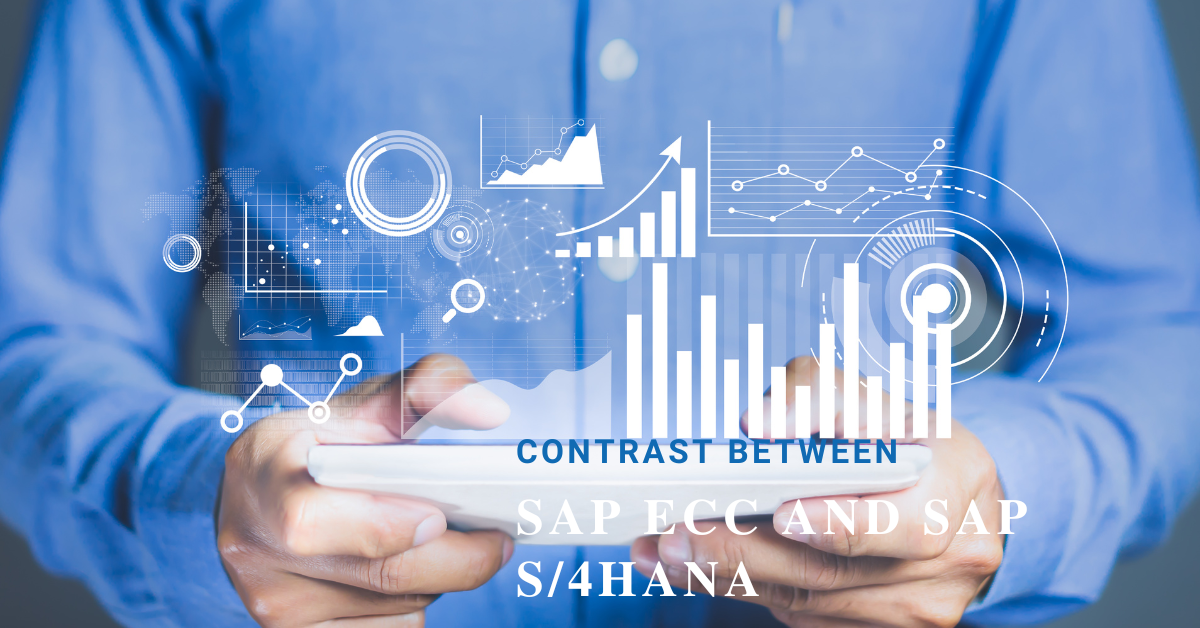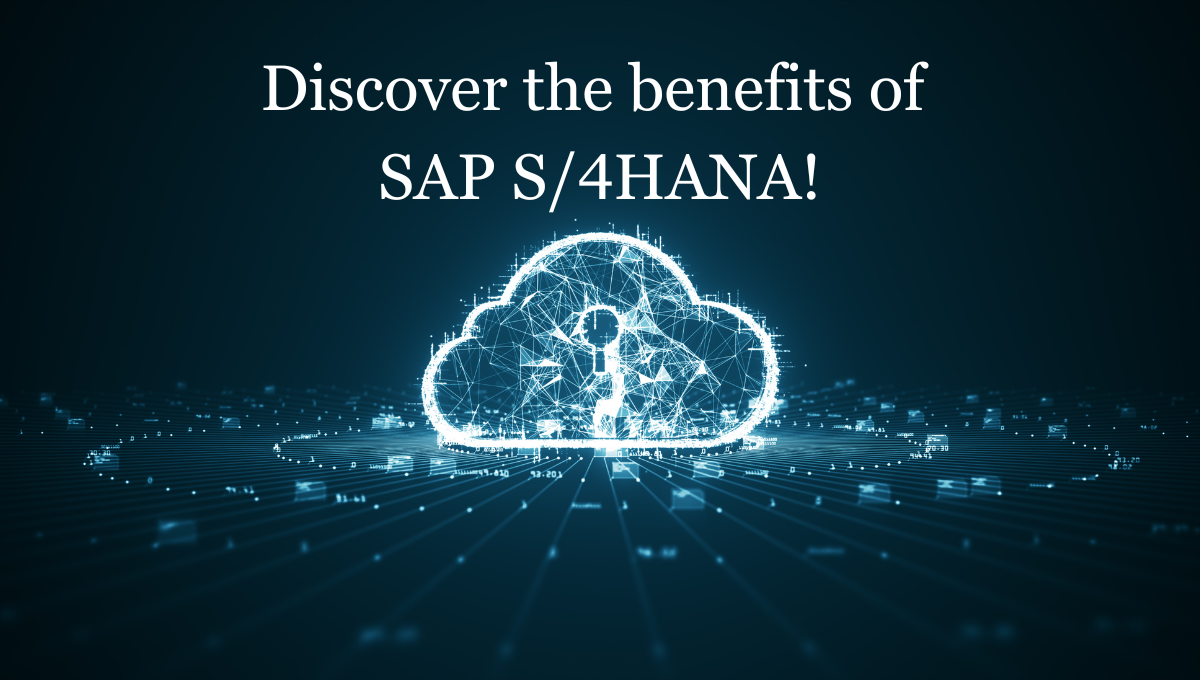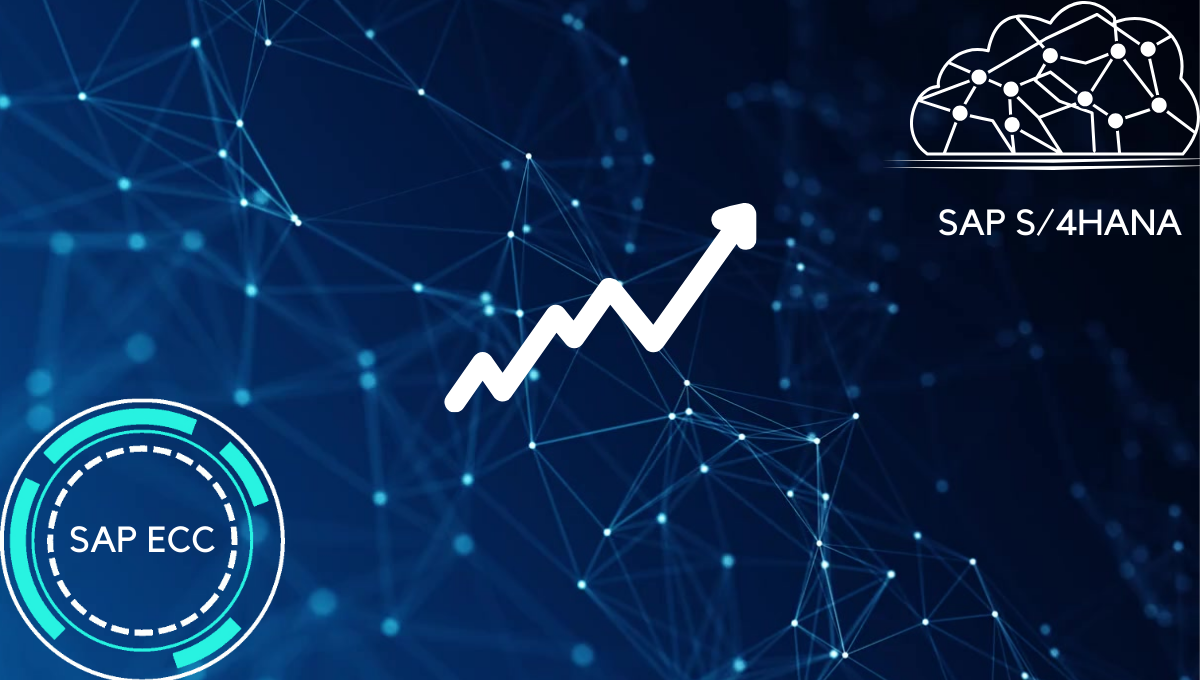
ECC TO HANA
SAP ECC to SAP S/4HANA: This blog dives into the fundamental differences between these pivotal business management systems and gives an understanding of what the next steps look like for organizations planning ahead.
Medium and large-scale enterprises currently utilize SAP ERP Central Component (SAP ECC) as their ERP software to oversee a wide array of business processes, logistics, and operations. However, with the emergence of SAP S/4 HANA as SAP’s forthcoming flagship ERP software, designed for both on-premises and cloud deployment, enterprises are confronted with the challenge of migration.
Let’s jump in!
Introduction to SAP Enterprise Central Component (SAP ECC)
Introduced in 2004, SAP ECC is an on-premises, modular ERP system that empowers enterprises to manage their foundational business processes, monitor resources, and facilitate data-driven decision-making.
This solution encompasses a diverse array of modules tailored to streamline and optimize day-to-day business activities, encompassing domains such as Finance (FI), Controlling (CO), Sales and Distribution (SD), Human Capital Management (HCM), Materials Management (MM), Project System (PS), Production Planning (PP), among others.
Businesses also leverage SAP ECC to enhance customer service, refine warehouse management, and uphold quality control standards. The system enables end-to-end data integration across disparate business functions, enabling real-time data processing and insights. A pivotal distinction between SAP ECC and SAP S/4 HANA pertains to the former’s compatibility with third-party databases like Oracle, MaxDB, and IBM.
SAP S/4 HANA represents the inaugural SAP Business Suite designed exclusively for deployment on the proprietary SAP HANA (High-Speed Analytical Appliance) database platform.
Noteworthy for its adaptability, SAP S/4 HANA can be deployed on-premise, within cloud infrastructures, or through hybrid models.
Its design aligns with SAP’s intelligent enterprise framework and its transition towards effectively catering to the evolving digital transformation requisites of businesses. Unlike SAP ECC, SAP S/4 HANA exclusively operates on the SAP HANA database and is devoid of compatibility with third-party databases.
Things to remember
Unlike SAP ECC, SAP S/4 HANA constitutes a modular ERP system encompassing nearly identical modules and core functionalities. This architecture enables businesses to configure and adopt modules that align with their specific demands. Nevertheless, SAP S/4 HANA’s distinctiveness lies in its incorporation of AI, machine learning, and automation to bolster operational efficiency and velocity.

Contrast between SAP ECC and SAP S/4 HANA
While SAP ECC has historically held sway within the ERP domain, its reliance on conventional relational database systems curtails its capacity to manage voluminous datasets and intricate challenges, potentially hindering the realization of contemporary computing potentials.
By contrast, SAP S/4 HANA introduces several significant enhancements that mark a substantial paradigm shift within the ERP landscape:
- Velocity and Performance: SAP S/4 HANA’s in-memory database architecture expedites data processing, facilitating real-time data exchanges. This translates to accelerated response times, seamless user experiences, and the capability to analyze extensive data volumes in near-real-time. Crucially, this transition to in-memory databases profoundly influences performance and scalability, streamlining processes and minimizing data redundancies.
- User Experience: SAP S/4 HANA excels yet again in its intuitive user interfaces. In comparison, the interface of ECC, while functional, can appear antiquated. S/4 HANA’s contemporary design enriches usability, contributing to user adoption and operational efficiency.
- Agility and Flexibility: The agility inherent to SAP S/4 HANA becomes manifest in its streamlined data model and processes, simplifying adaptation to evolving business prerequisites. Integrating novel functionalities or expanding operations becomes a more seamless endeavor, empowering enterprises to remain agile in dynamic markets.
- Deployment Options: While SAP ECC’s on-premise deployment necessitated investments in hardware infrastructure and ongoing maintenance, SAP S/4 HANA broadens deployment horizons by furnishing cloud-based alternatives. Cloud deployment can yield diminished initial expenses, heightened scalability, and reduced IT overhead. Organizations can select a deployment model that aligns with their financial parameters and strategic ambitions.
- Integration and Connectivity: Both SAP ECC and SAP S/4 HANA underscore connectivity with external systems and applications. However, SAP S/4 HANA’s architecture facilitates fluid integration through its in-memory capabilities.
Furthermore, S/4 HANA’s integration with the Internet of Things (IoT) and advanced analytics further extends its efficacy within an interconnected milieu.
Nonetheless, concerning the integration of SAP ECC and SAP S/4 HANA with e-commerce platforms, SaaS solutions, or cloud applications—such as PIM, CRM, WMS, POS, marketing automation systems, among others—both ERP systems exhibit shortcomings in terms of necessary API points or web services requisite for seamless integration.
Typically, rectifying this absence of B2B & B2C API points within both ERP systems would necessitate extensive development endeavors.
Benefits of Transitioning from SAP ECC to SAP S/4HANA
In 2021, a significant 72% of businesses cited enhanced efficiency as the foremost benefit of SAP S/4HANA adoption, followed by increased satisfaction at 61%. Additional advantages encompass:
- Enhanced integration with other SAP products
- Reduced operational and ownership costs
- Streamlined data models leading to a smaller database footprint
- Automated processes improving productivity and performance
- Accelerated intelligent decision-making
- Elevated overall profits
Charting the Path Ahead
The transition to S/4 HANA demands meticulous planning and execution, promising to unlock unprecedented capabilities and position organizations for sustained expansion. While SAP ECC has dutifully served as a dependable cornerstone, SAP S/4 HANA offers an evolutionary leap in terms of performance, scalability, and user experience.
As you embark upon this pivotal decision-making juncture of planning for the move to SAP S/4HANA, a comprehensive understanding of the distinctions between SAP ECC to SAP S/4HANA within this comparative analysis will serve as a robust framework for making an educated roadmap that harmonizes with your strategic vision.
How Can Ameri100 Help Your Business
Ameri100 is your trusted partner in SAP implementation, offering tailored solutions to streamline and optimize your business processes. With a team of seasoned experts, we bring extensive knowledge and experience to the table, ensuring a seamless transition to SAP’s powerful suite of enterprise solutions.
From project planning and system design to data migration and user training, Ameri100 provides comprehensive support at every stage of the implementation journey. Our commitment to excellence and customer satisfaction means that your SAP S/4HANA implementation will not only be efficient but also aligned with your unique business needs.
Check out our website and reach out to us for further information!

